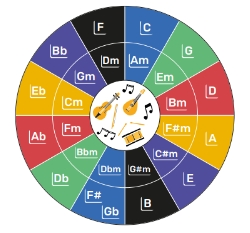This page contains hints, tips and resources to help you learn through your musical journey.
Practice tips
Here are some tips from teachers for parents and carers to help their child to practice.
1. Making practising easy
Finding somewhere your child can practise quietly without being disturbed by brothers, sisters, computers or social media is a real help. A music stand makes a good Christmas or birthday present.
3. Listen when you can
Be aware that your child won’t always be playing pieces... and exercises can be rather boring to listen to.Playing a whole piece too early can do more harm than good.
4. Trust the teacher
Sometimes it’s difficult to see the long-term picture, but, of course, if you’re not happy with the way your child’s lessons are going, please make sure you tell the teacher as soon as possible. A meeting with a teacher or sitting in on a lesson can often iron out simple problems, although this is sometimes difficult to fit in with a parent’s and teacher’s busy schedules.
5. There are no shortcuts
Writing in the note names or fingering may get your child playing quickly, but it will make long-term progress much harder and will undermine the work of the teacher. Playing and enjoying a musical instrument is, hopefully, for life, and the first few weeks and months will establish good habits.
Circle of fifths
Starting on C and going up or down 5 notes at a time shows the progression through all the major and minor keys.
Going clockwise around the circle shows the keys with sharps.
Going anti-clockwise around the circle shows the keys with flats.
The outer circle shows the major keys and the inner circle shows the relative minors.

Musical elements
Musical elements are the fundamental components that make up a piece of music, each contributing to the unique character and quality of the musical experience.
These include pitch, which determines the highness or lowness of a sound; rhythm, the pattern of beats in time; dynamics, which signify the loudness or softness of the music; and timbre, the quality that differentiates one instrument's sound from another. Harmony, melody, and structure also play crucial roles, shaping the way individual notes are combined and how the overall piece is organised.
Rests, Signs, Symbols and Clefs
In music notation, rests are symbols that indicate silence, with each type corresponding to a specific note duration. For example, a whole rest matches the duration of a whole note, signaling four beats of silence in common time.
Signs and symbols in sheet music guide the musician on how to perform a piece, including dynamics, tempo, and articulation.
Clefs are essential symbols placed at the beginning of the staff, determining the pitch of the notes on the staff; the most common are the treble and bass clefs. Understanding these elements is crucial for reading and performing music accurately.